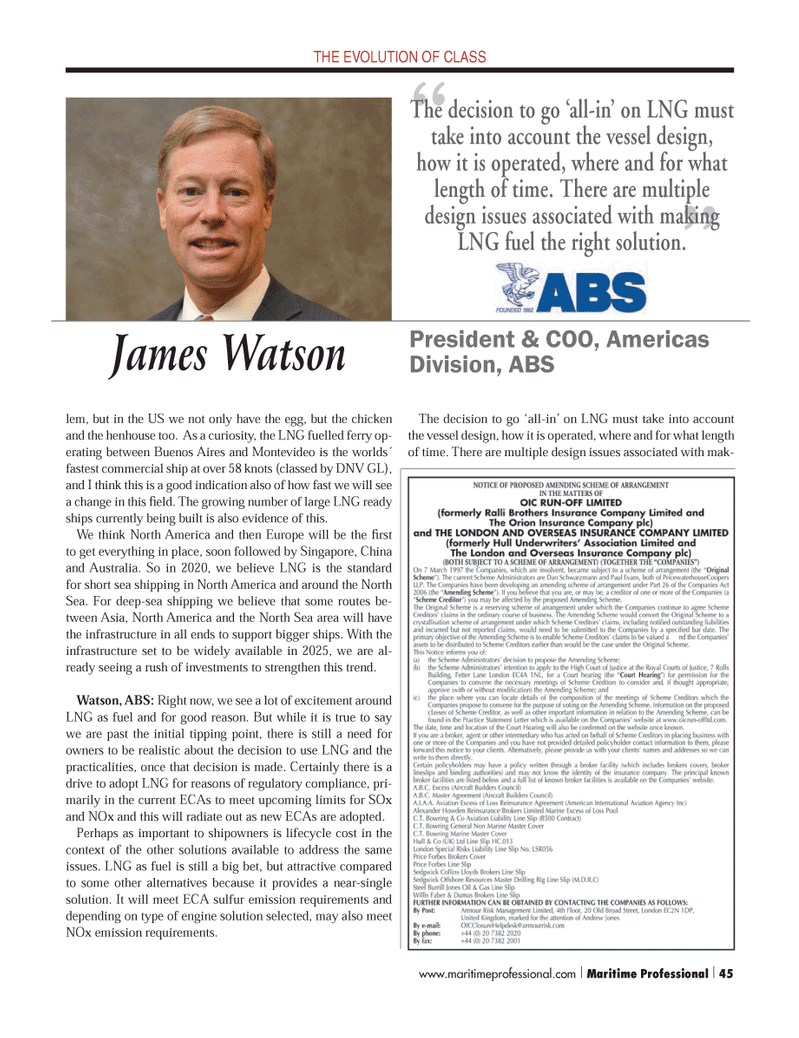
Page 45: of Maritime Logistics Professional Magazine (Q1 2014)
The Energy Edition: Exploration, Production & Transportation
Read this page in Pdf, Flash or Html5 edition of Q1 2014 Maritime Logistics Professional Magazine
lem, but in the US we not only have the egg, but the chicken and the henhouse too. As a curiosity, the LNG fuelled ferry op- erating between Buenos Aires and Montevideo is the worlds´ fastest commercial ship at over 58 knots (classed by DNV GL), and I think this is a good indication also of how fast we will see a change in this fi eld. The growing number of large LNG ready ships currently being built is also evidence of this.
We think North America and then Europe will be the fi rst to get everything in place, soon followed by Singapore, China and Australia. So in 2020, we believe LNG is the standard for short sea shipping in North America and around the North
Sea. For deep-sea shipping we believe that some routes be- tween Asia, North America and the North Sea area will have the infrastructure in all ends to support bigger ships. With the infrastructure set to be widely available in 2025, we are al- ready seeing a rush of investments to strengthen this trend.
Watson, ABS: Right now, we see a lot of excitement around
LNG as fuel and for good reason. But while it is true to say we are past the initial tipping point, there is still a need for owners to be realistic about the decision to use LNG and the practicalities, once that decision is made. Certainly there is a drive to adopt LNG for reasons of regulatory compliance, pri- marily in the current ECAs to meet upcoming limits for SOx and NOx and this will radiate out as new ECAs are adopted.
Perhaps as important to shipowners is lifecycle cost in the context of the other solutions available to address the same issues. LNG as fuel is still a big bet, but attractive compared to some other alternatives because it provides a near-single solution. It will meet ECA sulfur emission requirements and depending on type of engine solution selected, may also meet
NOx emission requirements.
The decision to go ‘all-in’ on LNG must take into account the vessel design, how it is operated, where and for what length of time. There are multiple design issues associated with mak-
THE EVOLUTION OF CLASS
President & COO, Americas
Division, ABS “ ”
The decision to go ‘all-in’ on LNG must take into account the vessel design, how it is operated, where and for what length of time. There are multiple design issues associated with making
LNG fuel the right solution.
James Watson www.maritimeprofessional.com | Maritime Professional | 45
MP Q1 2014 34-49.indd 45 2/26/2014 1:31:10 PM

 44
44

 46
46
